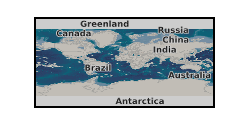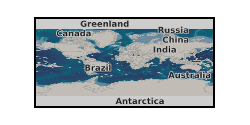Clay mineralogy
Type of resources
Topics
Keywords
Contact for the resource
Provided by
Years
Formats
Representation types
Update frequencies
-

Palynofacies, microcharcoal, clay mineralogical and carbon isotope mass spectrometry measurements from the Late Pliensbachian (934 – 918 mbs) of the Mochras core, Cardigan Bay Basin, NW Wales, UK. Data description: This dataset of the Mochras borehole contains palynofacies, microcharcoal, clay mineralogical data, bulk organic carbon-isotopes, TOC and CaCO3 data from the interval 934 – 918 mbs. This dataset extents the previously published dataset (951 – 934 mbs) deposited at: https://doi.org/10.5285/d6b7c567-49f0-44c7-a94c-e82fa17ff98e and discussed in the published paper by Hollaar et al. (2021) https://doi.org/10.1038/s43247-021-00307-3. The dataset is also linked to the XRF dataset https://doi.org/10.5285/c09e9908-6a21-43a8-bc5a-944f9eb8b97e Damaschke et al. (2021) which also covers the study interval of the here deposited dataset of the Mochras core. This dataset covers part of the Upper Margaritatus Zone in the Mochras core and covers the onset of the Late Pliensbachian positive carbon-isotope excursion. This data was collected, interpreted and analysed by Teuntje Hollaar, Claire Belcher, Stephen Hesselbo, and Jean-Fran?ois Deconinck. The dataset was created within the scope of the JET project (Integrated understanding of Early Jurassic Earth system and timescale) - https://gtr.ukri.org/projects?ref=NE%2FN018508%2F1. This project has received funding from the International Continental Scientific Drilling Programme (ICDP) and the UK Natural Environment Research Council (NERC).
-

This dataset comprises 35 samples analysed for clay mineralogy from IODP Expedition 374 Site U1521 to the Ross Sea, collected on the RV JOIDES Resolution. Shipboard biostratigraphy and magnetostratigraphy suggests the samples are mainly early Miocene in age (McKay et al., 2019, Proceedings of the International Ocean Discovery Program). The uppermost samples do, however, include younger Plio-Pleistocene sediments.
-

Terrestrial palaeo-environmental proxy data has been collected to examine orbital changes in wildfire activity in the Early Jurassic of the Mochras Borehole, Cardigan Bay Basin, Wales. To do this a high resolution charcoal abundance dataset was created and quantified in two size fractions, microscopic charcoal (10-125 µ) and macroscopic charcoal (>125 µ). To take potential changes in riverine influx and/or organic preservation in account on the charcoal abundance, palynofacies were analysed to document all terrestrial and marine organic particles present in the samples, and next to this, X-ray fluorescence data was gathered to assess detrital output. Mass spectrometry provided information on the carbonate and Total Organic Carbon content and bulk organic carbon isotopes. This information was used to look at changes in the lithology and the carbon cycle. Finally, clay mineralogical data was obtained to look at changes in the hydrological cycle in relation to wildfire activity. This dataset spans 951-934 mbs from the Mochras borehole, which is the time equivalent of ~350 kyr, in the Margaritatus Zone of the Upper Pliensbachian. The Mochras sediments have been deposited in the Cardigan Bay Basin, Wales. At the time of deposition, this location was positioned in the Laurasian Seaway at a paleolatitude of ~35°N. These datasets were obtained at a high resolution (10 cm) using X-ray diffraction, X-ray fluorescence, mass spectrometry and palynological preparations. This high resolution was acquired to analyse the presence of precessional orbital forcing on wildfire and the other proxy datasets. This data was collected, interpreted and analysed by Teuntje Hollaar, Claire Belcher, Stephen Hesselbo, Micha Ruhl, Jean-Franҫois Deconinck, Sarah Jane Baker and Luke Mander. The complete dataset presented in the published article file ‘Wildfire activity enhanced during phases of maximum orbital eccentricity and precessional forcing in the Early Jurassic’ has been included in this data file.
 NERC Data Catalogue Service
NERC Data Catalogue Service